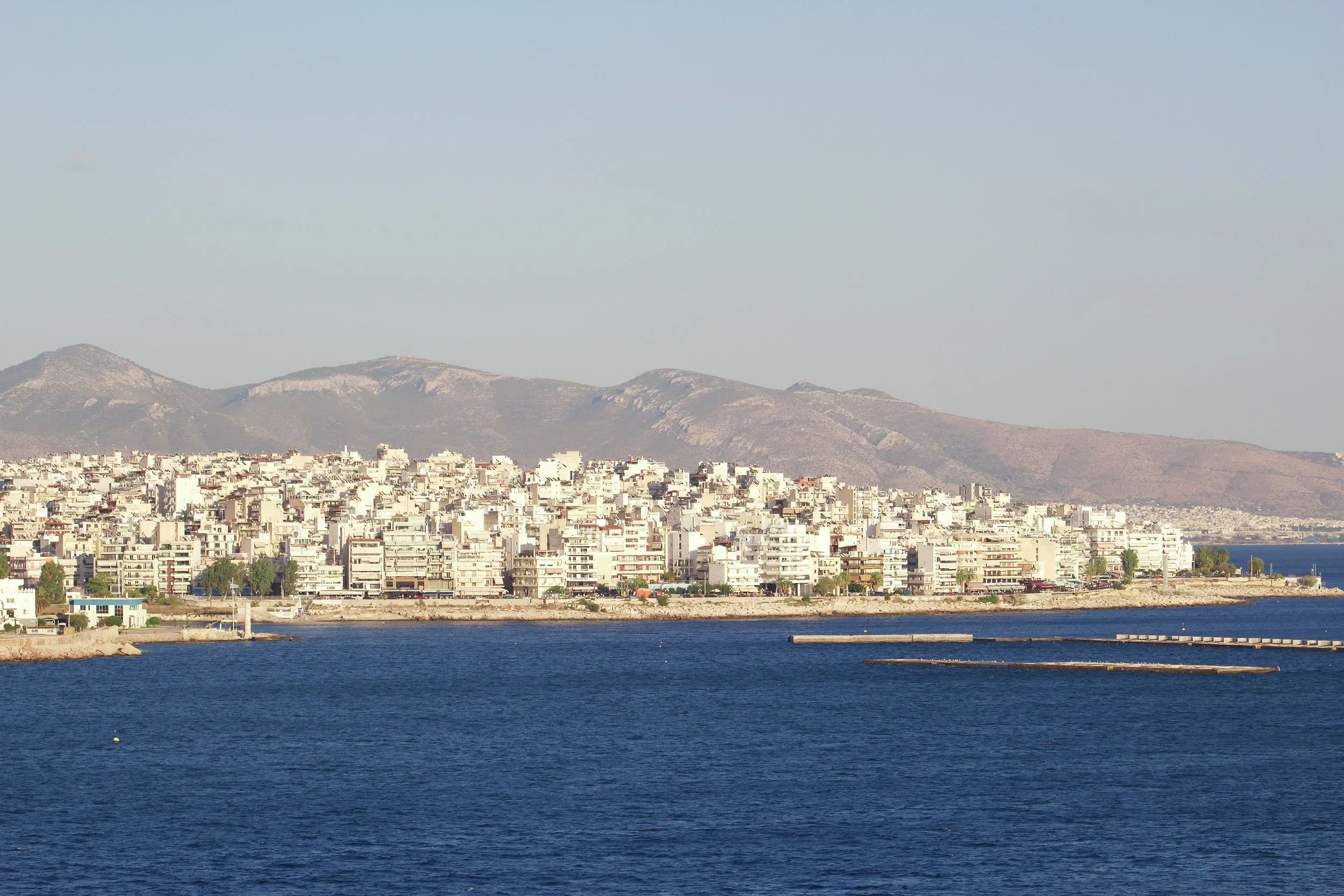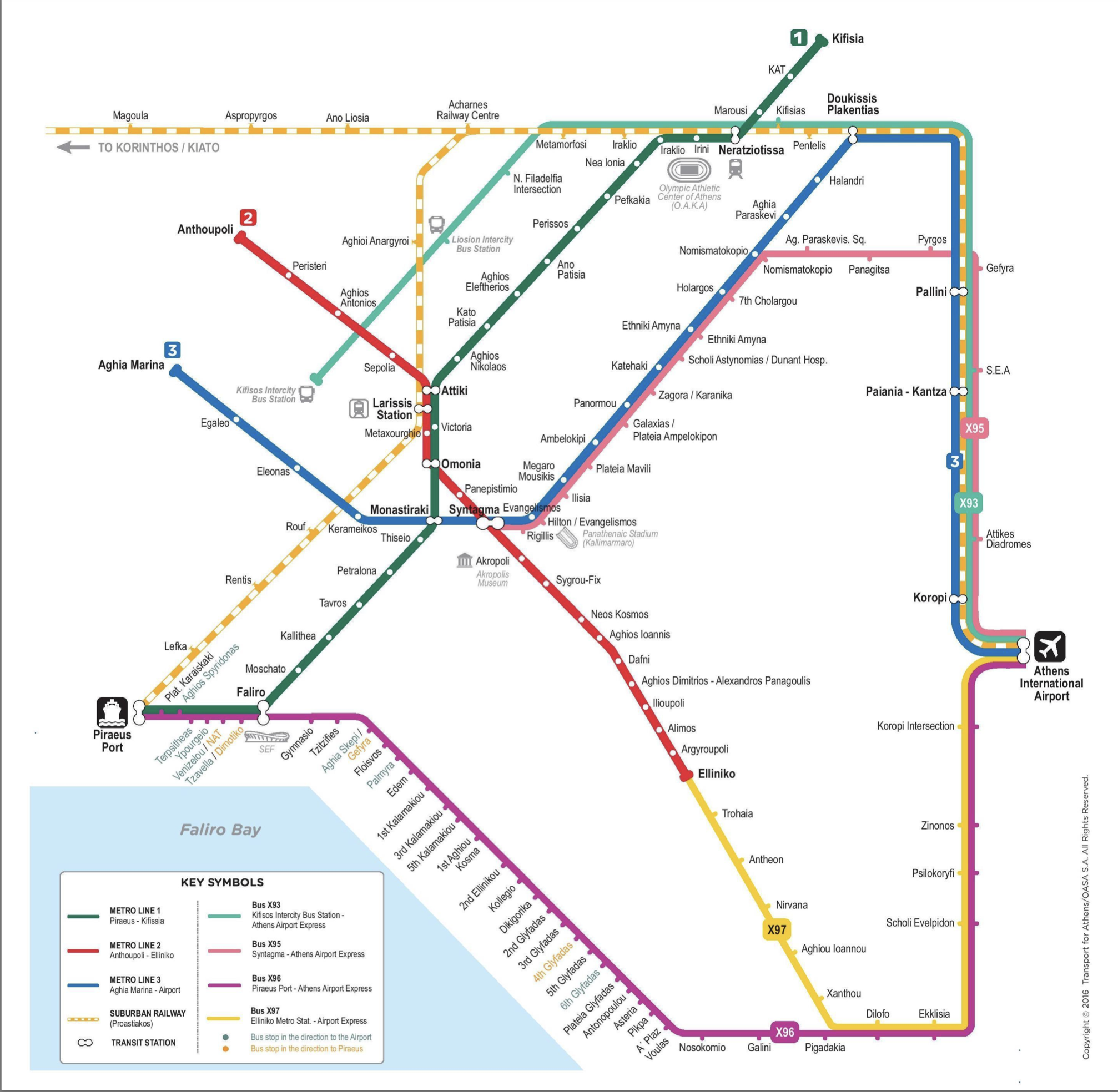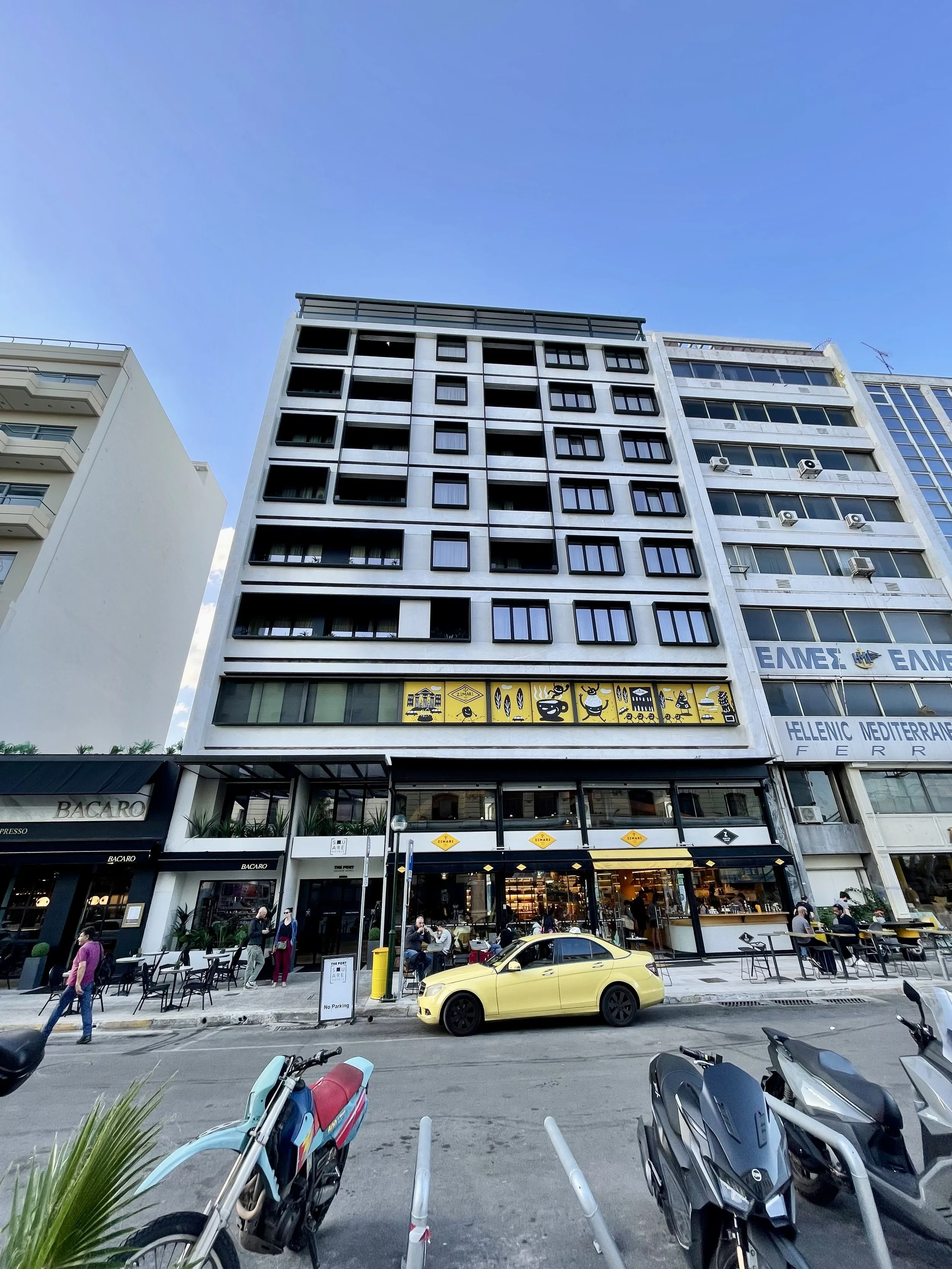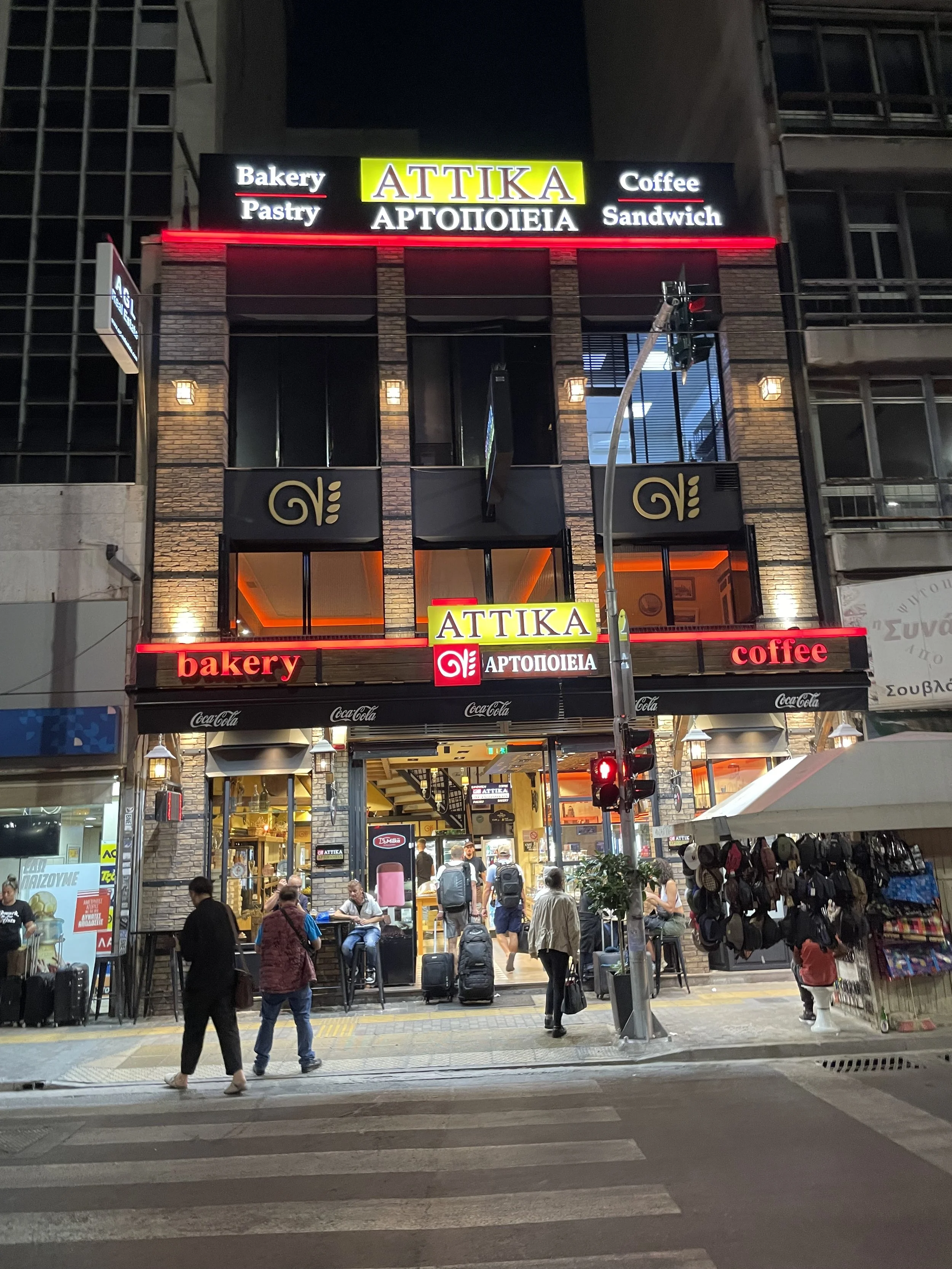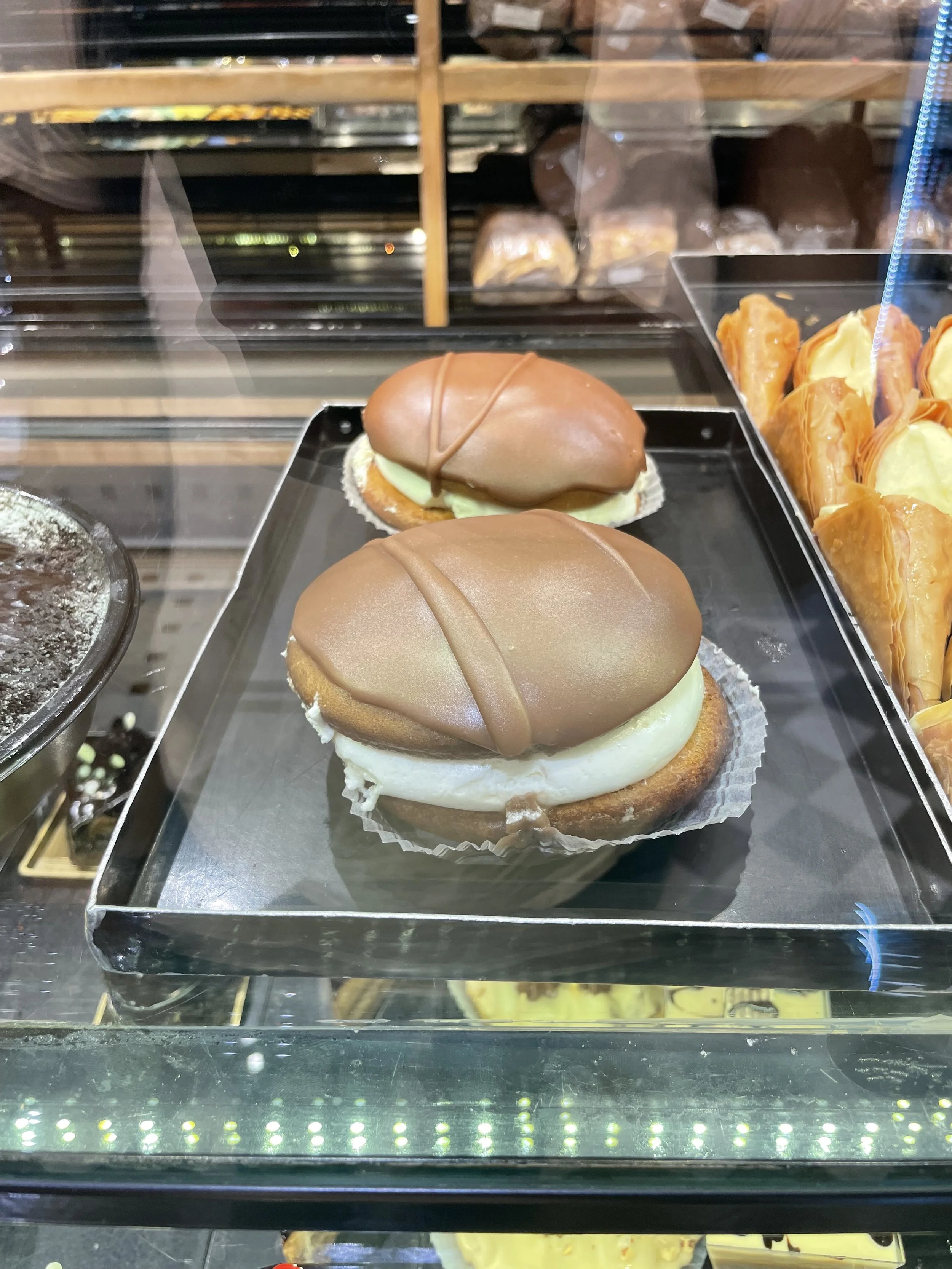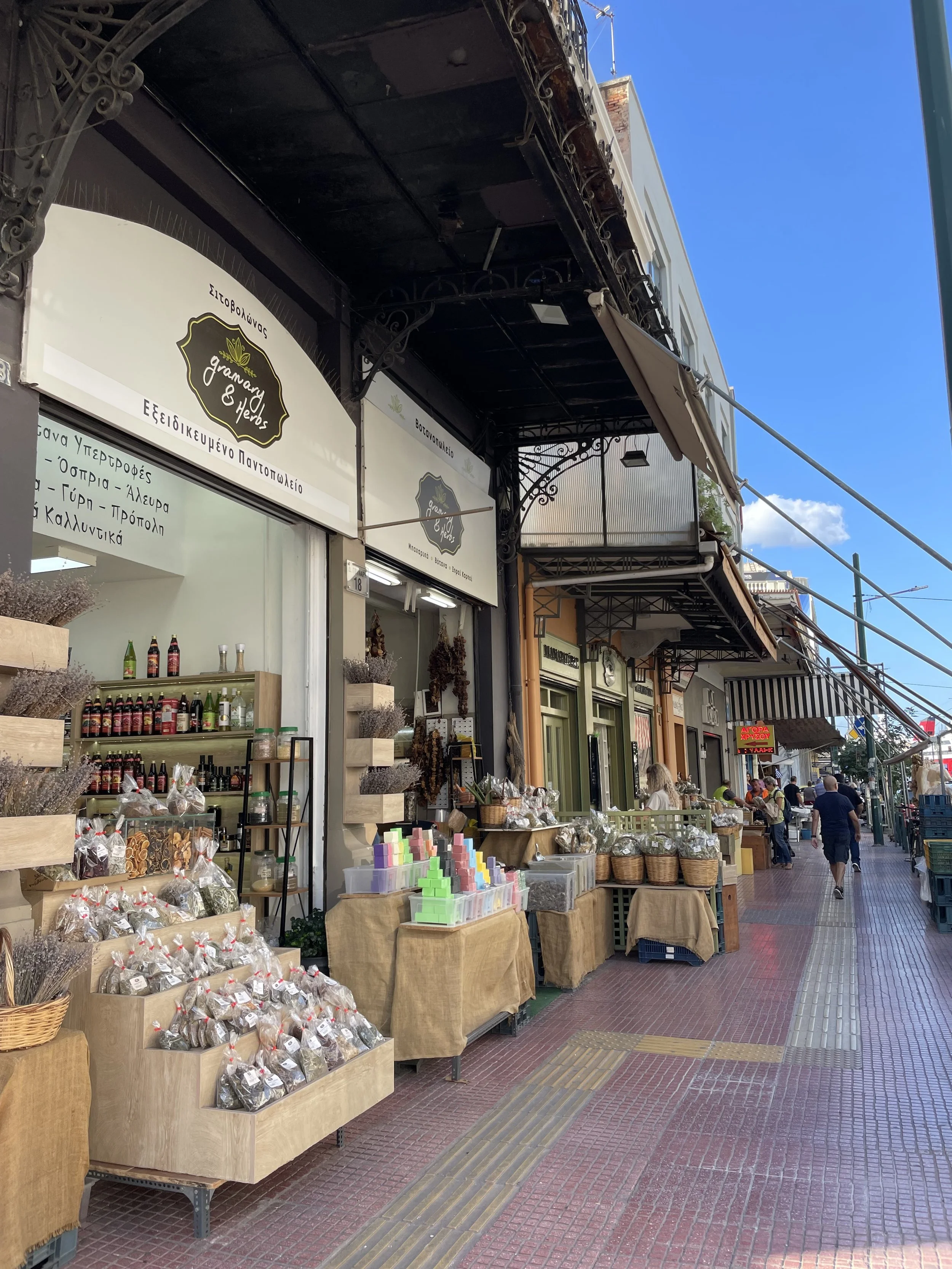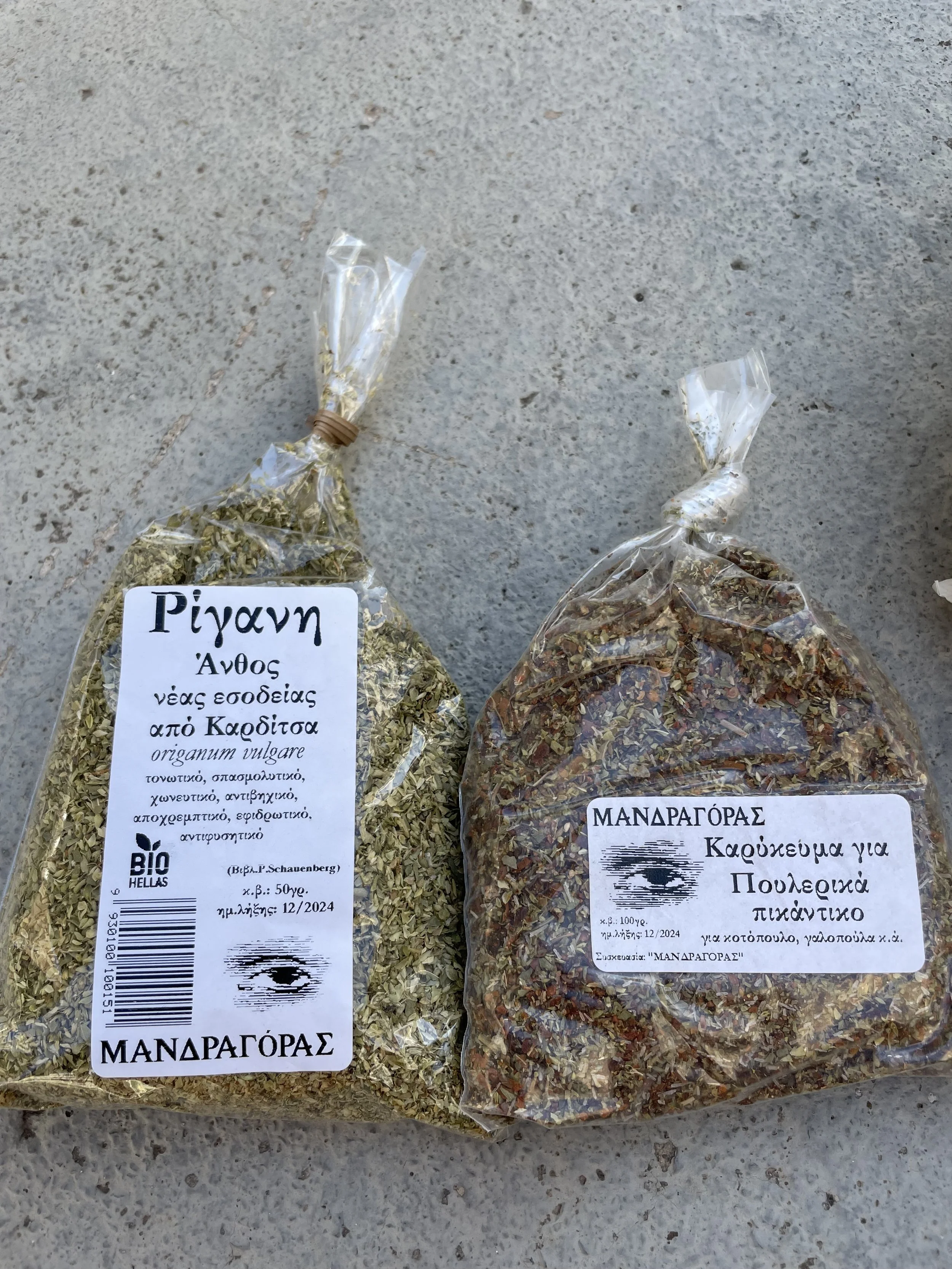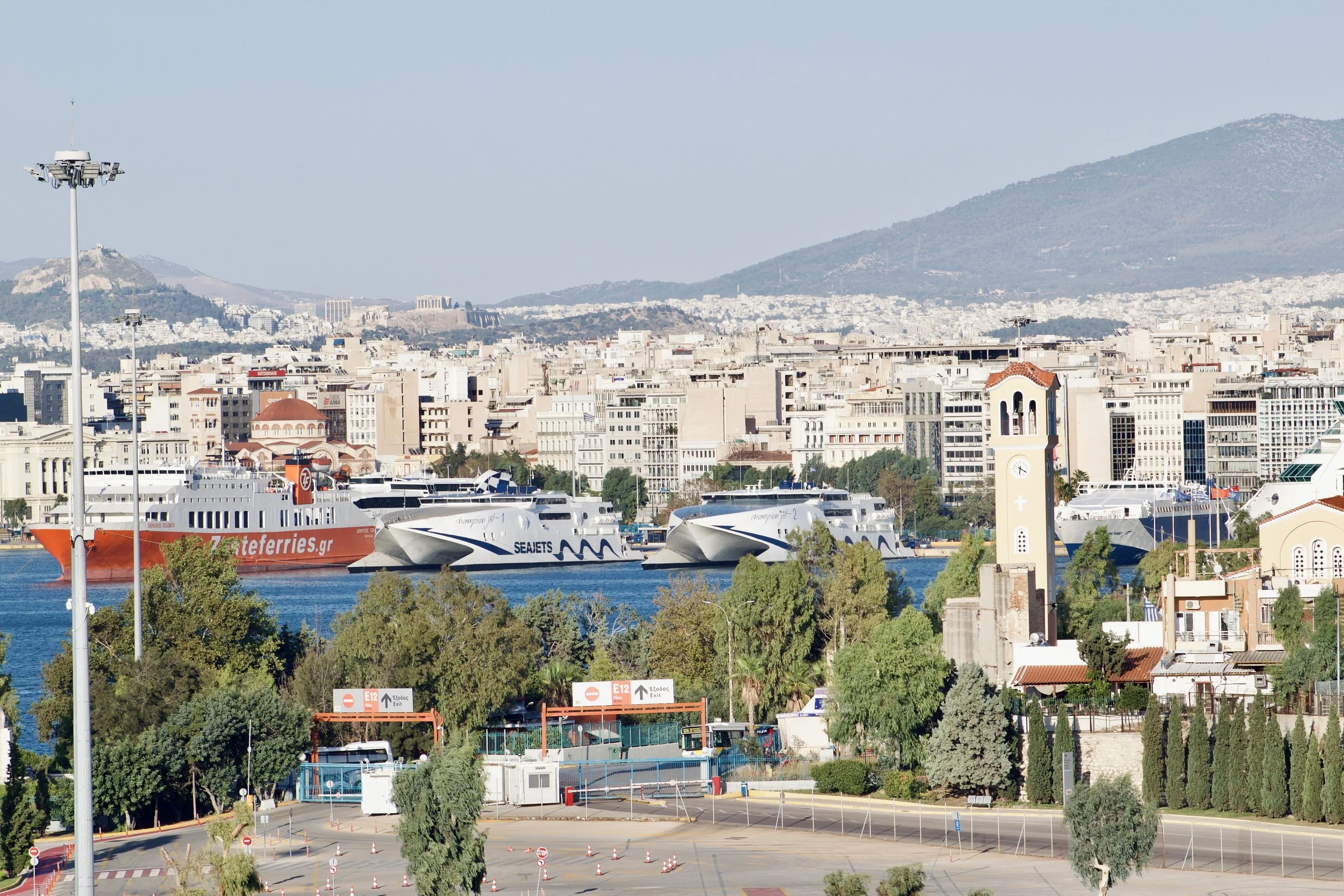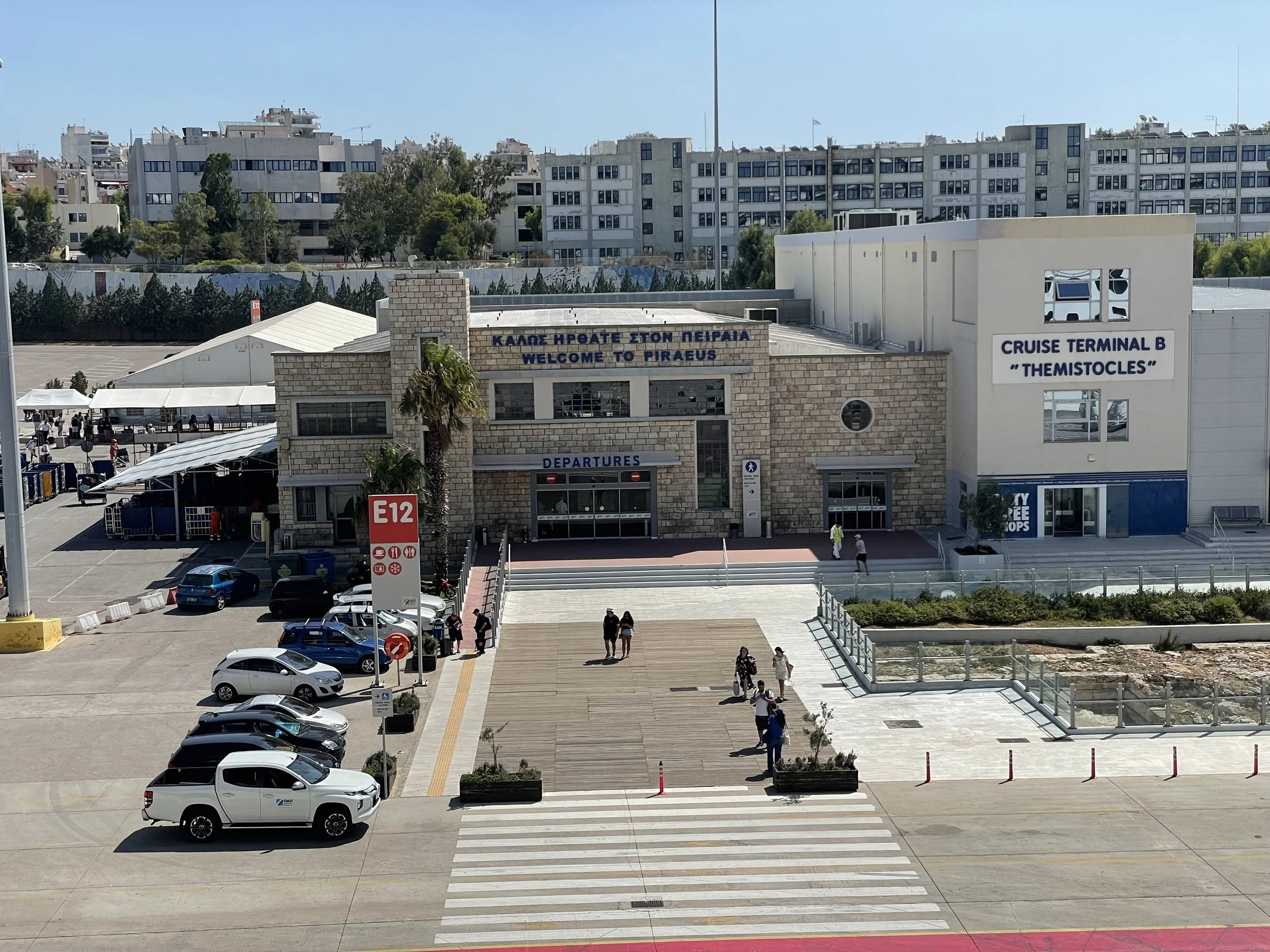Wandering Piraeus, Greece: Markets, Mistakes & Mediterranean Magic
Piraeus
Before we jump into the full story, if you’re someone who prefers visuals over words—this one’s for you: 🎥 Watch the video here
After a 10-hour transatlantic flight from Chicago, I landed in Athens International Airport (Eleftherios Venizelos) in the early afternoon—tired, slightly dazed, but excited to be in Greece. The airport itself was easy to navigate once I oriented myself, and thankfully, I was traveling light. That made weaving through terminals and signage a bit more manageable.
I followed the signs marked “Metro/Train”—they read “ΜΕΤΡΟ / Προαστιακός”—toward the railway depot, my goal being to reach Piraeus, the bustling port city just outside central Athens where my hotel was located. Piraeus isn’t just a transport hub; it’s the maritime soul of Athens, home to ferries, mega-yachts, cruise ships, and streets lined with seafood tavernas, bakeries, and boutique hotels.
The Athens Train Map
Train Trouble and Unexpected Help
Navigating the train system, however, proved to be my first Greek challenge. I approached the ticket machine, only to be met with a wall of Greek text. After a few fumbled taps, I gave up and headed to the service counter, where I was able to purchase a ticket to Piraeus (insert price here—typically around €10 for a ride on the suburban Proastiakos line).
Ticket in hand, I descended to the platform, only to face another Greek-only sign. My Google Translate app tried its best, but wasn’t much help deciphering the exact train line or timing. Luckily, a kind woman who spoke some English saw the confusion written all over my face and kindly pointed me toward the train I needed.
I boarded the first train and was cruising along just fine—until the train stopped at the end of the line and everyone disembarked. I sat there looking lost, clutching my ticket like a compass with no north, until another kind stranger explained that I needed to transfer to the Green Line Metro (Line 1) to complete my trip to Piraeus. The connecting train was, thankfully, just across the platform.
And here’s where I learned something new: Greek trains don’t have automatic doors. I stood waiting for the doors to open… and waited… and waited. Eventually, the conductor smiled, pointed to a button, and said gently, “Push.” So I did, and the door swung open. I have a sneaking suspicion the other passengers were quietly amused—but honestly, I didn’t care. I was in Greece, navigating trains, and learning lessons the hard way.
The Port Square Hotel
Hotel, Jet Lag, and a Little Drama with the Lights
I finally arrived in Piraeus and walked the short few blocks from the station to my hotel: The Port Square Hotel, a chic little boutique property located near Korai Square. I’d arrived before check-in, so I waited in the cozy lobby, the fatigue of travel starting to settle deep into my bones.
Once my room was ready, I headed upstairs, dropped my bags, grabbed a quick bite to eat, and crashed. I had every intention of heading into Athens that evening to explore—but jet lag had other plans.
Later that night, I woke up feeling slightly more alive and wandered out for a late-night walk through Piraeus’ streets. I stumbled upon a small bakery with a tray of pastries in the window. I picked what looked like a Greek version of a Whoopie pie, but the flavor was… surprising. Let’s just say I chalked it up to culinary curiosity and kept moving. Later I found the pastry is called a “kremopita tsoureki” or sometimes referred to more casually as a “tsoureki with cream filling.”
The Bakery
The Pastry
Back at the hotel, things took a strange turn. As night fell, I discovered I couldn’t turn off the lights—and the toilet wouldn’t flush. I called down to the front desk, and the night clerk told me not to worry, the system was automatic. But it clearly wasn’t working. After some back and forth, I figured out the issue: I needed to insert my room key into the slot by the door to activate the room’s electricity. The very thing the original desk clerk told me I didn’t need to do. Once that mystery was solved, I turned off the lights, flushed the toilet, and finally got a good night’s sleep.
Day Two: Morning Markets & Spices in Piraeus
I woke early the next morning, well-rested and on a mission: snacks and spices.
With a few hours to spare before checkout, I set off into the streets of Piraeus, following the scent of roasted nuts and the hum of local life. A few blocks from my hotel, I wandered down a beautiful street filled with market stalls and tucked-away shops—the kind of old-world charm that draws you into places you hadn’t planned to explore. The air was fragrant with spices. Cafés were just opening, and locals sat sipping frappés beneath black awnings. Vendors were setting up stands piled high with honey-soaked pastries, glistening olives, fresh citrus, and baskets of herbs that spilled onto the sidewalk.
Though often overshadowed by central Athens, Piraeus in the early morning felt peaceful—almost intimate—with its gritty charm.
That’s when I found Mandragoras, a spice shop tucked between a butcher and a café, and instantly knew I’d hit the jackpot. The scent hit me before I even stepped inside—sunshine, oregano, and something warmly spiced. Inside, small bags lined the shelves and the shop workers greeted me with a smile.
I picked up two items:
Ρίγανη Άνθος (Oregano Flowers) – Sourced from Karditsa, this organic oregano is the flowering top of the plant, prized for its intense aroma and flavor. The label noted its antibacterial, digestive, and antioxidant properties—but I was already sold at first sniff.
Καρύκευμα για Πουλερικά πικάντικο (Spicy Poultry Seasoning) – A bold, peppery blend made for chicken or turkey. The word πικάντικο means spicy, and I could already picture using it on a tray of crispy roasted drumsticks.
A few stalls later, I came across another vendor offering tasting samples of local olive spreads. I tried a small bite on a piece of bread—and that was all the convincing I needed. I left with two jars of Amvrosia Gourmet olive spreads:
Paté Ελιάς (Black Olive Spread) – Deep, earthy, and rich. It’s perfect for slathering on warm bread or mixing into roasted vegetables.
Paté Ελιάς Πράσινη (Green Olive Spread) – Brighter and tangier, this one’s going to shine with crackers and cheese back home.
By the time I made my way back to the hotel, my bag was a little heavier but I was happy. What started as a simple errand for spices turned into a morning of flavors, textures, and chance encounters. Piraeus might be known as a port city or a gateway to the islands—but that day, it gave me something more: a memory I could bottle, sprinkle, and spread.
Port of Piraeus
Off to the Port—On Foot, Of Course
With my spice haul secured and checkout time upon me, it was time to make my way to the cruise port. Now, any reasonable person would’ve hailed a cab. But I’m not exactly known for doing things the easy way—so I decided to walk the two miles to the terminal. It was a beautiful day, I had nothing pressing to do, and I figured… why not?
Pro tip: Piraeus Port has multiple terminals—and naturally, I headed to the wrong one first. After a sweaty detour and a bit more walking in the heat, I finally found my way to Terminal B. As I crossed the open parking lot, I spotted The Enchantment of the Seas towering ahead of me.
Check-in was quick and painless—thankfully—and before long I was boarding the ship, sun on my face and that satisfying sense of accomplishment in my chest.
My arrival in Greece hadn’t exactly been smooth—but it was memorable. From deciphering a train ticket machine, to discovering how light switches work in European hotels, to wandering through spice markets and misreading cruise terminals—it was two days full of firsts. And honestly? I wouldn’t trade a minute of it.
Piraeus may be a port city, but it’s not just a stopover. It’s a living, breathing slice of Greece, with a rhythm all its own. While Athens waited in the distance with its temples, ruins, and grandeur, my time in Piraeus reminded me that some of the best travel moments aren’t found in guidebooks—they’re found in bakeries that serve mystery pies and markets that smell like thyme.

